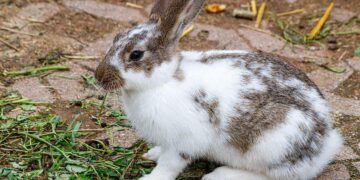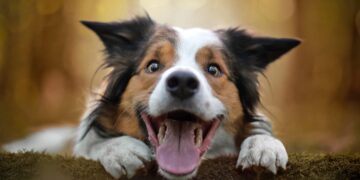Table of Contents
Introduction: The Ghost in the Machine
The glow of the laptop screen cast long shadows across the room, a familiar blue-white beacon in the late-night quiet.
For weeks, this had been my ritual.
I was on a quest, a digital pilgrimage to find the “best dog in the world.” My browser tabs were a chaotic mosaic of “Find Your Perfect Breed” quizzes, each promising to distill the complexities of my life into a single, furry answer.1
I answered their questions with the earnest precision of a student taking a final exam.
Am I active or a homebody? Do I have children? How much shedding can I tolerate?
With each click, I felt a flicker of hope, a sense that the algorithm was churning, computing, and would soon present me with my soulmate.
Yet the results were a frustrating paradox, a jumble of contradictions.
The quizzes suggested a dog small enough for my city apartment but simultaneously robust enough for my weekend hiking ambitions; a low-shedding companion that wasn’t high-maintenance; a creature friendly with strangers but also a devoted, singular guardian.
I was caught in the modern condition of analysis paralysis, drowning in a sea of well-intentioned but ultimately useless data.
What I was searching for, I slowly began to realize, wasn’t a real animal.
I was hunting a ghost.
This ghost dog is a phantom that haunts the search of nearly every prospective owner, a composite creature assembled from the highlight reels of our culture.
It has the heroic loyalty of a movie dog, the photogenic charm of an Instagram-famous breed, and the quiet, unobtrusive perfection of a stuffed animal.3
It is a creature of pure fantasy, a ghost in the machine of our expectations.
This flawed search, this hunt for a mythical beast, is not a harmless exercise in daydreaming.
It has devastating real-world consequences.
Shelters across the country are filled with the casualties of this disconnect between fantasy and reality.
The most common reasons people surrender their dogs are not born of malice, but of a fundamental mismatch.
A recent study of shelter relinquishments found that behavioral issues accounted for 28% of surrenders, with housing or moving at 18%, and an inability to provide care at 16%.5
These are not just statistics; they are thousands of individual stories of heartbreak, of bonds that fractured under the weight of unmet expectations.6
Dogs are returned for aggression, for being too energetic, for house soiling, for destructive behaviors—all predictable outcomes when a living being is placed into a life it was not designed to inhabit.5
What if the very question we are asking—”What is the best dog for me?”—is the source of the problem? What if the search for the perfect dog is the very thing preventing us from building a good and lasting relationship with one?
Part I: The Flawed Blueprint: My Near-Disastrous Foray into Canine Consumerism
Before my epiphany, I approached the task with the logic of a consumer.
I opened a spreadsheet, my mind clinging to the comfort of quantifiable data.
The columns were a testament to conventional wisdom, a checklist of desirable traits gleaned from dozens of websites.10
Column A: Size.
Column B: Temperament.
Column C: Grooming.
Column D: Activity Level.
I was attempting to purchase a companion as one might purchase a new appliance, comparing feature sets and specifications, confident that with enough research, I could eliminate all variables and arrive at a perfect, risk-free choice.
This consumerist approach led me, as it leads so many, down a path of seductive illusion.
I became fixated on the idea of a Border Collie.
I was captivated by the breed’s reputation for genius-level intelligence, its sleek and athletic appearance, and the powerful mythos surrounding it—the “Rin Tin Tin” effect, where we imagine a dog arrives pre-programmed for heroism and effortless companionship.4
I consumed information about the breed, focusing on the highlights.
I pictured a dog of keen, watchful expression, a body that was a marvel of athletic balance and endurance, a partner in intellectual and physical pursuits.14
This was the dog I
thought I wanted, the dog that would reflect my own aspirations of being smarter, more active, more engaged with the world.
The image in my mind was of a noble companion, a creature whose history was woven into the very fabric of the British Isles, a working dog of immense tractability and purpose, bred to take direction by voice and whistle over vast distances.16
I imagined us on long, thoughtful hikes, the dog trotting effortlessly at my side, a testament to our perfect bond.
I was, in essence, casting a role in the movie of my life, and the Border Collie had the perfect look for the part.
This is one of the most common and perilous mistakes in choosing a dog: prioritizing appearance or a single, captivating trait while willfully ignoring the complex reality of the whole animal.18
The reality check, when it came, was brutal.
It wasn’t a single event, but a slow-dawning horror that crept in as I moved from the breed’s highlight reel to its owner’s manual.
The minimum daily exercise requirement was not a gentle suggestion; it was a non-negotiable contract for one to two hours of vigorous, focused activity.21
This was not a dog that would be content with a leisurely stroll around the block.
This was an athlete in need of a rigorous training regimen.
Furthermore, the breed’s vaunted intelligence was not a passive trait.
It was an active, demanding force that required constant engagement.
Border Collies need a job.
Without one, they will invent their own, often with destructive consequences.23
Their minds require the stimulation of trick training, puzzle toys, scent work, or agility courses to prevent boredom and the anxiety that follows.23
I mapped these needs against the stark topography of my actual life: a demanding desk job that often stretched past nine hours, a small apartment with no yard, and a genuine preference for quiet evenings spent with a book rather than running agility drills in a park.
The mismatch was profound.
I was a quiet librarian trying to acquire a particle accelerator.
To bring a Border Collie into my life would not have been an act of love, but one of profound selfishness.
It would have been trapping a brilliant, energetic mind in a sensory deprivation tank.
This realization led me to a poignant question posed by applied ethologist Kim Brophey: “…why do we keep breeding so many border collies, and cattle dogs, and Australian shepherds if lots of people think they’re cool and really pretty, but at the same time we don’t want 50% or more of the behavior that just typically comes along with that phenotype…?”.25
The “bad behaviors” that often lead to these dogs being surrendered—the nipping, the chasing, the obsessive focus on movement—are not behavioral flaws.
They are the magnificent engine of a herding dog running without a purpose, the very traits that were painstakingly selected for over centuries.17
My near-disastrous choice was a classic case of falling for the “Disney model” of dog ownership, a powerful cognitive bias that convinces us that love and a few training classes can overwrite millennia of genetic programming.4
I was forced to confront the fact that I had been shopping for a fantasy, and in doing so, had nearly engineered a tragedy.
Part II: The Epiphany: From Shopping for a Pet to Designing a Life
Dejected and humbled, I closed my spreadsheet.
The quest for the perfect dog was over because the perfect dog, I now understood, did not exist.
I decided to visit my local shelter, not with the intention of adopting, but to volunteer, to recalibrate my perspective by engaging with the reality of dogs rather than the fantasy.
It was there, amidst the cacophony of barks and the sterile smell of disinfectant, that the paradigm shifted.
I was paired with a seasoned adoption counselor, a woman who had seen thousands of hopeful faces and hundreds of heartbreaking returns.
When I mentioned my own failed search, she didn’t pull out a breed encyclopedia.
She didn’t ask me what I wanted in a dog.
Instead, she began a deep, probing interview about my life.
She asked about my work schedule, my social habits, my stress levels, my financial stability, and my emotional resilience.27
She was not trying to match a list of features; she was trying to understand the intricate ecosystem of my existence.
Her process was less like a sales consultation and more like professional matchmaking, a service that prioritizes deep compatibility, shared values, and mutual understanding over superficial attraction.28
She spoke of “lifestyle compatibility” as the number one factor for success and of treating each dog not as a representative of a breed, but as an “individual, unique animal” with its own history and personality.33
This conversation was a revelation.
It provided a practical framework for an idea that had been slowly forming in my mind: the problem wasn’t the dogs, it was the process.
This real-world experience sent me down a new path of research, and I soon discovered the work of Kim Brophey, an applied ethologist whose work provides the scientific language for what that shelter counselor was doing intuitively.
Brophey’s L.e.g.S.
model—a framework for understanding behavior through the four pillars of Learning, Environment, Genetics, and Self—was the intellectual key I had been missing.35
It presented the dog not as a product to be acquired, but as a complex, dynamic system to be understood.
It moved beyond the simplistic “nature vs. nurture” debate and offered a holistic view of the forces that shape a canine’s being.38
The principles of professional human matchmaking and the science of applied ethology began to converge in my mind.
Matchmakers invest significant time to understand their clients on a profound level, assessing their values, intentions, and emotional needs to foster authentic connections.40
The best adoption counselors do the same, moving beyond surface-level questions to understand the true capacity and lifestyle of a potential adopter.30
Brophey’s L.e.g.S.
model provides the scientific structure for this deep inquiry, a systematic way to assess the “client” on both sides of the equation—human and canine.
And then, the final piece clicked into place.
The unifying analogy that tied everything together was not shopping, nor was it simply matchmaking.
It was an act of architecture.
You don’t walk into a store and buy a house off a shelf.
A successful structure is the result of a deliberate, thoughtful process.
An architect must first understand the fundamental properties of their building materials, then conduct a thorough survey of the site where the structure will stand, and finally, create a blueprint that allows those materials to exist in harmony with that specific site.
The process of bringing a dog into one’s life, I realized, should be no different.
We are not merely acquiring a pet to fill a space in our house; we are designing a shared life, a co-habitation.
We are architects of a living, breathing system.
This perspective connects the practical considerations of designing a pet-friendly home—with its dedicated spaces and durable surfaces—with the deeper, symbolic role a dog plays in our lives, bringing loyalty, fostering well-being, and making a house feel more human, more like a home.43
Part III: The Architect’s Method: A New Blueprint for Canine Co-habitation
This realization gave birth to a new framework, a method that shifts the perspective from consumer to creator.
The Canine Architect’s Method is a three-phase process designed to build a strong, lasting, and harmonious relationship from the ground up.
It replaces the flawed checklist with a professional design process, ensuring the final structure is built to last.
Phase 1: Material Science – Understanding Your Building Blocks (The L.E.G.S. Model)
Before an architect can draw a single line, they must possess an intimate knowledge of their materials.
They need to know the tensile strength of steel, the compressive strength of concrete, the weathering properties of wood.
In our context, the “material” is the dog, and our guide to its properties is the L.e.g.S.
model.35
This model allows us to deconstruct the whole dog into its constituent parts, understanding the forces that have shaped it.
- Genetics (G): The Core Material. This is the foundational element, the dog’s breed heritage and the “hardwired” characteristics that come with it.20 Genetics dictates what the dog was originally bred to do, a purpose that echoes through its modern behavior.46 Is your material like oak—sturdy, reliable, and versatile like a Labrador Retriever? Or is it more like carbon fiber—lightweight, high-performance, and specialized like a Border Collie? Understanding the genetic purpose is paramount. A terrier was designed to dig and pursue vermin; a sighthound was designed to run with explosive speed; a guardian dog was designed to be watchful and protective. To ignore these genetic blueprints is like trying to build a skyscraper out of clay bricks; failure is engineered into the design from the start.25
- Learning (L): The Material’s History & Treatment. This represents the dog’s entire history of experiences, from puppyhood socialization to formal training to past traumas.36 In architectural terms, this is the material’s provenance and how it has been treated. Has the wood been properly cured, sanded, and sealed, resulting in a stable and resilient material? Or was it left out in the rain, causing it to warp and rot? A dog with a history of positive socialization and consistent training is a well-prepared material, ready for construction. A dog from a background of neglect or abuse is a reclaimed material that may have hidden flaws and require careful, skilled handling.
- Environment (E): The Intended Use and Placement. This is the context in which the dog will live—your home, your routine, your family.36 An architect must always consider the environment. You wouldn’t use untreated pine for an outdoor deck in a rainy climate, nor would you install floor-to-ceiling glass on the ground floor of a building in a high-crime area. Similarly, placing a high-energy herding dog in a small, quiet apartment is a fundamental environmental mismatch. The environment must support and complement the material’s inherent properties, not work against them.
- Self (S): The Unique Character of the Sample. This is the dog’s individual personality—the sum total of its Genetics, Learning, and Environment that creates a unique being.36 No two pieces of wood are identical; each has its own grain, knots, and coloration. Likewise, no two dogs, even from the same litter, are exactly alike. The “Self” is the final, crucial element that must be assessed. Is this individual dog bold or timid, social or reserved, stoic or sensitive? This requires direct observation and interaction, moving beyond breed stereotypes to see the individual animal.
Phase 2: The Site Survey – A Radical Self-Assessment
An architect never designs in a vacuum.
The process begins with a meticulous analysis of the site—its topography, climate, zoning laws, and soil composition.
In our framework, the “site” is you.
It is your life in all its unvarnished reality.
This phase requires a radical and unflinching self-assessment, moving beyond the life you aspire to live and focusing on the life you actually lead.48
The goal is to create an honest survey of your personal landscape, providing the foundational data upon which a successful design can be built.13
The following table serves as a guide for this critical process.
Table 1: The Canine Architect’s Site Survey
| Architectural Element | Canine Analogy | Guiding Questions for Introspection |
| Topography | Energy & Activity Landscape | Are you a mountain range requiring daily, strenuous hikes, or a coastal plain suited for leisurely strolls? Quantify your honest, consistent daily activity output in hours and intensity. Review your calendar for the last month: how many hours were spent in high-intensity (running, vigorous hiking), moderate (brisk walking), and low-intensity (strolling, pottering in the yard) activity? |
| Climate | Social & Emotional Atmosphere | Is your home a bustling Grand Central Station with constant visitors, children, and noise, or a quiet, remote cabin with few interruptions? How do you, and other members of your household, handle chaos, noise, and the demands of social engagement? Are you seeking a social facilitator or a quiet companion? |
| Zoning Ordinances | Hard Constraints & Non-Negotiables | What are the absolute, unchangeable rules of your “municipality”? This includes landlord rules on size or breed 7, a realistic monthly and emergency budget for food, supplies, and veterinary care 6, family allergies 33, and immovable work or travel schedules that dictate how long a dog will be left alone.8 |
| Structural Load | Emotional & Mental Capacity | What is your true capacity for managing stress, frustration, and complex problem-solving? Are you emotionally and mentally equipped to handle a “fixer-upper” with significant behavioral challenges like separation anxiety or reactivity 29, or does your current life demand a more “move-in ready” temperament with predictable, stable behavior? |
| Future Development | Long-Term Life Plans | What does the 5- and 10-year development plan for your life look like? Consider potential partners, children, relocation for work, or changes in financial status.29 Will the structure you design today be able to accommodate these future expansions and changes, or will it become unsuitable? |
Phase 3: Principles of Sound Design – The Matchmaking Ethos
With a deep understanding of your materials (the dog’s L.e.g.S.) and a comprehensive survey of your site (your life), you can now begin the design phase.
This is where you create the blueprint for your shared life, guided by principles of sound architectural design, which align remarkably well with the ethos of professional matchmaking.51
- Function Dictates Form: This is perhaps the most famous maxim in modern architecture, and it is the most crucial principle in this framework. The primary “function” of the dog within your life’s structure is a harmonious, sustainable companionship. This means its behavioral traits, energy level, and social needs must be compatible with your site survey. The “form”—its appearance, color, or breed popularity—must be a secondary consideration.18 A beautiful design that is functionally unusable is a failure. A beautiful dog that is functionally incompatible with your life is a tragedy waiting to happen.
- Creating Harmonious Systems: A successful building is more than just a collection of rooms; it’s an integrated system where plumbing, electrical, HVAC, and structural elements work in concert. This framework draws on systems thinking to view the human-dog relationship in the same way.54 The goal is to create a positive feedback loop. For example, an active person (site) chooses an energetic dog (material). The person’s lifestyle provides the necessary outlet for the dog’s energy. A well-exercised dog is calm and well-behaved in the home, which brings joy and reduces stress for the person, who is then more motivated to continue providing that activity. Each part of the system supports and enhances the others.
- Consulting the Master Builders: No architect designs a major project alone. They consult with structural engineers, soil analysts, and master builders. In the world of dogs, our master builders are reputable, responsible breeders and experienced rescue organizations.13 These are not salespeople pushing a product. They are custodians of their “materials,” with a deep, multi-generational understanding of their genetic lines or extensive hands-on experience with the individual dogs in their care.34 A responsible breeder or rescue will function as a consultant in your design process. They will interview
you as rigorously as you interview them, because they have a vested interest in ensuring their material is used in a project where it can succeed.58 They are your most valuable partners in making an informed decision.
Part IV: Case Studies in Living Architecture: Four Designs for Modern Life
To make this framework tangible, let us conduct a series of architectural reviews.
By analyzing several distinct breeds through the L.e.g.S.
model, we can see how different “materials” are suited for vastly different “sites,” creating unique styles of living architecture.
1. The High-Tech Smart Loft (Border Collie)
- Genetics (Core Material): The Border Collie is a high-performance, intelligent composite material, precision-engineered in the borderlands of Scotland and England for one purpose: herding livestock.16 Its structure is a marvel of functional design—an athletic, off-square frame built for endurance, speed, and agility, with an intensely keen and watchful expression that betrays the powerful processor within.14 This material is not designed for passive existence; it is designed to problem-solve, analyze, and act.
- Environment (Site Requirements): This design is wholly unsuited for a passive, low-engagement site. It demands a “user” who is, in effect, an active programmer, constantly providing new software, challenges, and tasks to occupy its formidable intellect.23 A static environment leads to system crashes, manifesting as destructive behavior, obsessive-compulsive actions, and anxiety. The site must also provide significant “bandwidth” in the form of a minimum of 1-2 hours of daily, vigorous exercise.21 A simple walk is insufficient; this material needs to run, jump, and think.
- Self/Learning (Maintenance & Operation): The operator must be skilled in programming an “off switch” through dedicated training, teaching the system when to enter a low-power state, as it does not come as a factory setting.22 The material is also prone to specific structural vulnerabilities that require monitoring, including hip dysplasia, epilepsy, and Collie Eye Anomaly.59
- Architectural Summary: The Border Collie is a brilliant but demanding piece of living architecture. It is not a “plug-and-play” appliance but a high-tech smart home that requires a dedicated, knowledgeable, and highly engaged operator. It is the perfect design for a hobbyist or professional who views canine engagement—be it through competitive sports, advanced training, or actual farm work—as a primary component of their lifestyle, not a weekend afterthought.
2. The Charming, High-Maintenance Historic Landmark (French Bulldog)
- Genetics (Core Material): The French Bulldog is a unique, artisanal material with a complex history. It was bred down from the formidable English Bulldog, mixed with local Parisian ratters, and refined into a companion piece for the lace workers of Normandy and the socialites of 19th-century Paris.62 Its defining characteristics are man-made and aesthetic: a compact, “pear-shaped” body, a distinctive “roach back,” and the traits of achondroplasia (dwarfism), resulting in short limbs and a heavy-boned structure.64
- Environment (Site Requirements): This design is exclusively for a climate-controlled indoor environment. Its exercise needs are minimal—a short, leisurely daily walk is sufficient.66 However, it has a high requirement for human presence and can suffer from significant “separation anxiety” faults if left alone for long periods.67 Most critically, the site must not include environmental hazards like extreme heat, humidity, or open bodies of water. The brachycephalic (flat-faced) design severely compromises its cooling system, making it dangerously prone to heatstroke, and its front-heavy structure makes it unable to swim.66
- Self/Learning (Maintenance & Operation): This material requires a patient “restoration expert” for training, as it possesses an intelligent but famously stubborn streak.67 The most significant aspect of ownership is the extensive and costly maintenance. The design comes with a long list of inherent, often painful, structural flaws. These include Brachycephalic Obstructive Airway Syndrome (BOAS), Intervertebral Disc Disease (IVDD), chronic allergies, skin fold infections, hip dysplasia, and a predisposition to numerous other conditions, requiring a substantial and lifelong budget for specialized veterinary care.70
- Architectural Summary: The French Bulldog is a design of undeniable charm and immense character. However, it must be approached as one would approach the stewardship of a historic landmark. It is a preservation project, not new construction. The owner must be fully aware of, and financially prepared for, its significant, costly, and unavoidable maintenance requirements. The decision to bring one into your life is a commitment to managing its inherent structural compromises for its entire lifespan.
3. The Elegant, Purpose-Built Performance Venue (Greyhound)
- Genetics (Core Material): The Greyhound is an ancient and pure material, a design perfected over millennia for a singular, breathtaking function: high-speed pursuit.72 Its entire form follows this function. The iconic inverted S-shape, the deep chest housing an oversized heart and lungs, the flexible spine acting as a coil, the long, powerful legs, and the narrow, aerodynamic head are all optimized for the double suspension gallop, a gait they have evolved to its highest canine form.74
- Environment (Site Requirements): Paradoxically, this high-performance material requires very little indoor space. Greyhounds are the quintessential “apartment dogs,” famous for their “couch potato” demeanor and ability to sleep for much of the day.77 However, this low indoor requirement is predicated on one non-negotiable condition: the site must provide regular access to a safe, securely fenced “performance space” where the dog can sprint. A life of leash-walks alone is insufficient and can be dangerous. Their powerful, deeply ingrained prey drive means they can never be trusted off-leash in an unenclosed area.79
- Self/Learning (Maintenance & Operation): Many retired racing Greyhounds require careful and patient socialization to other dog breeds. Their life experience is often limited exclusively to other Greyhounds, and the appearance and behavior of other dogs can be novel and confusing.81 Their thin skin, which lacks a protective undercoat, and low body fat make them vulnerable to both physical injury and temperature extremes, requiring coats in cold weather.83
- Architectural Summary: The Greyhound is a specialized, minimalist masterpiece of functional engineering. It is the architectural equivalent of a world-class concert hall or velodrome: quiet, elegant, and dormant for most of its existence, but built for breathtaking moments of peak performance under very specific conditions. It is a design for an owner who appreciates this duality and can provide the necessary secure space for its primary function to be expressed.
4. The All-Weather, Multi-Purpose Family Compound (Labrador Retriever)
- Genetics (Core Material): The Labrador Retriever is a robust, versatile, and highly reliable building material. It was developed from the St. John’s Water Dog in Newfoundland, a hardy canine bred to assist fishermen in the icy North Atlantic waters.84 Its key genetic features are all intensely practical: a dense, water-resistant double coat for insulation, a thick, rudder-like “otter tail” for steering in water, webbed paws for powerful swimming, and a famously gentle “soft mouth” for retrieving game without damage.88
- Environment (Site Requirements): This is one of the most adaptable materials available, capable of thriving in a wide variety of “climates”—from city apartments to sprawling country estates, with families or single owners.90 However, this adaptability is contingent on meeting its high “energy budget.” A Labrador requires a significant daily investment of at least one to two hours of activity to prevent system overloads, which manifest as boredom-induced destructive behaviors.92 This is a working dog at heart, and a sedentary lifestyle is a poor site for this material.
- Self/Learning (Maintenance & Operation): The Labrador is renowned for its high trainability. Its intelligence and innate eagerness to please make “renovations” and “upgrades” (training) a straightforward and rewarding process for the owner.95 However, the material is prone to several well-documented structural issues, including a high incidence of hip and elbow dysplasia, as well as a strong genetic predisposition towards obesity, which requires careful dietary management and portion control.99
- Architectural Summary: The Labrador Retriever is the quintessential versatile, family-friendly design. It is the architectural equivalent of a well-built, multi-purpose family compound—robust, reliable, and welcoming. Its success, however, is not automatic. It depends entirely on the owner’s commitment to meeting its foundational requirements for energy expenditure and mental engagement. It is an adaptable design, but it is not a low-maintenance one.
Conclusion: Building a Home, Not Just Filling a House
My journey, which began in the frustrating digital maze of online quizzes, ended in the quiet, tangible reality of a shelter’s visiting room.
After completing my own architectural process, I knew what I was looking for—or rather, I knew what kind of structure I could build.
My Site Survey revealed a life that was moderately active, socially quiet, and emotionally resilient, with a solid financial foundation but a non-negotiable work schedule.
I needed a design that was adaptable and sturdy, but not one that required the constant, high-level programming of a “smart loft.”
My Material Science research led me away from the specialized breeds and toward the versatile world of mixed breeds.
In a scruffy, confident terrier mix, I found my material.
I consulted the “master builders”—the shelter staff—who provided the dog’s “L” and “S” from the L.e.g.S.
model.
They told me his history (Learning) and described his confident, curious personality (Self).
I researched his likely “G” (Genetics), preparing myself for the tenacity, intelligence, and high prey drive inherent in terrier breeds—the “high-tensile strength” of a dog bred to be a fearless and independent hunter.47
I understood that his energy would need a constructive outlet, and I was prepared to provide it through training games and long, exploratory walks.105
The dog I brought home was not the ghost I had been chasing.
He was not a flawless, mythical creature.
He was a real being, with a history, a genetic blueprint, and a unique personality.
But because I had done the architectural work beforehand, I was prepared for him.
I had designed a life where his needs could be met, where his inherent traits could be celebrated rather than suppressed.
The quest for the “best dog in the world” is a fool’s errand, a search for a phantom that leads only to disappointment and, too often, to tragedy.
It encourages a consumer mindset that is fundamentally incompatible with the responsibility of guardianship.
The true, meaningful, and lasting goal is to shift our perspective.
We must cease to be shoppers and instead become architects.
The challenge is not to find the perfect dog, but to become the best possible architect for a dog.
It is about the deliberate, thoughtful, and empathetic process of designing a shared existence—a structure built on a foundation of mutual understanding, a deep respect for inherent nature, and an unwavering commitment to creating a space where both human and canine cannot just coexist, but truly thrive.
This is how you build a home, not just fill a house.
Works cited
- Best Dog Breed for Me and My Family? – American Kennel Club, accessed August 14, 2025, https://www.akc.org/breed-selector-tool/
- Dog Breed Selector Quiz – Which Dog Should I Get?, accessed August 14, 2025, https://www.selectadogbreed.com/
- What I wish people considered before choosing a dog breed – PetsRadar, accessed August 14, 2025, https://www.petsradar.com/dogs/dog-breeds/choosing-a-dog-breed-things-i-wish-people-would-consider-first
- Huge Mistakes People Make When Looking for a Dog – McCann …, accessed August 14, 2025, https://www.mccanndogs.com/blogs/articles/huge-mistakes-people-make-when-looking-for-a-dog
- Investigating the Reasons behind Companion Animal Relinquishment: A Systematic Content Analysis of Shelter Records for Cats and Dogs, 2018–2023, accessed August 14, 2025, https://pmc.ncbi.nlm.nih.gov/articles/PMC11394480/
- Common Surrender Reasons (Dogs) • MSPCA-Angell, accessed August 14, 2025, https://www.mspca.org/pet_resources/common-surrender-reasons-dogs/
- Why Are Dogs & Cats Given Up? – Petfinder, accessed August 14, 2025, https://www.petfinder.com/dogs-and-puppies/information/dog-facts/pets-relinquished-shelters/
- The Top 9 Reasons Why People Give Up Their Pets – FOUR PAWS International, accessed August 14, 2025, https://www.four-paws.org/our-stories/publications-guides/the-top-9-reasons-why-people-give-up-their-pets
- Data Analysis Reveals Reasons for Owner Surrender | Best Friends Animal Society, accessed August 14, 2025, https://bestfriends.org/network/blog/data-analysis-reveals-reasons-owner-surrender
- Selecting a Pet Dog | American Veterinary Medical Association, accessed August 14, 2025, https://www.avma.org/resources/pet-owners/petcare/selecting-pet-dog
- vcahospitals.com, accessed August 14, 2025, https://vcahospitals.com/know-your-pet/factors-to-consider-in-pet-selection—dogs#:~:text=Before%20choosing%20a%20pet%2C%20consider,right%20dog%20for%20your%20family!
- 4 factors you MUST consider when choosing a dog breed – Rumie Learn, accessed August 14, 2025, https://learn.rumie.org/jR/bytes/4-factors-you-must-consider-when-choosing-a-dog-breed/
- Finding the Perfect Breed for Me: How to Choose the Right Dog, accessed August 14, 2025, https://www.akc.org/expert-advice/puppy-information/what-dog-is-right-for-me/
- Border Collie Dog Breed Information – Continental Kennel Club, accessed August 14, 2025, https://ckcusa.com/breeds/border-collie/
- Border Collie Dog Specs | by Calfee marilou – Medium, accessed August 14, 2025, https://medium.com/@calfeemarilou48/border-collie-dog-specs-4cce3604456c
- Border Collie – Wikipedia, accessed August 14, 2025, https://en.wikipedia.org/wiki/Border_Collie
- Border Collie History: The Herding Dog’s Development Through Time, accessed August 14, 2025, https://www.akc.org/expert-advice/dog-breeds/border-collie-history-the-herding-dogs-development-through-time/
- The Biggest Mistake to Avoid When Selecting a Puppy – Peach on a Leash, accessed August 14, 2025, https://peachonaleash.com/the-biggest-mistake-to-avoid-when-selecting-a-puppy/
- 6 Common Mistakes New Dog Owners Make – Furtropolis – Outward Hound, accessed August 14, 2025, https://outwardhound.com/furtropolis/pet-parenting/6-common-mistakes-new-dog-owners-make
- Selecting the Right Dog for Your Lifestyle, accessed August 14, 2025, https://catchdogtrainers.com/wp-content/uploads/2021/11/selecting-a-dog-1.pdf
- How Much Exercise Does A Border Collie Need, accessed August 14, 2025, https://backseatbordercollie.com/how-much-exercise-does-a-border-collie-need/
- How Much Exercise Does A Border Collie Need? – DingBatt Dog Training, accessed August 14, 2025, https://www.dingbattdogtraining.co.uk/how-much-exercise-does-a-border-collie-need
- Best Enrichment Activities for Border Collie’s Mental Stimulation – CollieBall, accessed August 14, 2025, https://www.collieball.com/blog/5-engaging-enrichment-activities-for-your-border-collie-dog-breed
- Enrichment for Border Collies – DingBatt Dog Training, accessed August 14, 2025, https://www.dingbattdogtraining.co.uk/enrichment-for-border-collies
- Applied Ethology and How It Can Help Your Dog Succeed: An Interview with Kim Brophey | Pupford, accessed August 14, 2025, https://pupford.com/blogs/all/applied-ethology-kim-brophey-interview
- Let’s Meet The Herding Dogs | Wholistic Canine, accessed August 14, 2025, https://mywholisticcanine.com/lets-meet-the-herding-dogs/
- Matching Shelter Pets to Owners | ASPCA Pet Health Insurance, accessed August 14, 2025, https://www.aspcapetinsurance.com/resources/matching-shelter-pets/
- Pet Matchmaking – CareTX.org | Dog Rescue and Adoptions, accessed August 14, 2025, https://caretx.org/pet-matchmaking/
- How to Ensure the Perfect Match With Your New Dog: Expert Tips from Trainer Michael Hill, accessed August 14, 2025, https://www.latimes.com/companion-animals/dogs/care/story/how-to-choose-the-right-dog
- Intake-to-Placement: Basic Matchmaking Process Improvements – Human Animal Support Services Toolkits, accessed August 14, 2025, https://resources.humananimalsupportservices.org/hubfs/Basic%20Matchmaking%20Process%20Improvements.pdf?hsLang=en
- Find the Right Dog — Canine Comprehensive, accessed August 14, 2025, https://www.caninecomprehensive.com/dogmatchmaking
- Matchmaking – Michael Hill- Dog Training, accessed August 14, 2025, https://www.michaelhilldogtraining.com/matchmaking
- How do you choose your breed : r/dogs – Reddit, accessed August 14, 2025, https://www.reddit.com/r/dogs/comments/1icf3fy/how_do_you_choose_your_breed/
- What does the Matchmaker Placement program do? – American Pets Alive!, accessed August 14, 2025, https://americanpetsalive.org/uploads/resources/Austin-Pets-Alive-Matchmaker-Overview-4.23.pdf
- Meet Your Dog: the Game-Changing Guide to Understanding Your Dog’s Behavior by Kim Brophey, accessed August 14, 2025, https://www.meetyourdogbook.com/
- What Are Your Dog’s L.E.G.S? – Positive Dog Training, accessed August 14, 2025, https://positive.dog/legs/
- The Home of Family Dog Mediation, accessed August 14, 2025, https://www.familydogmediation.com/
- Book Review: Meet Your Dog by Kim Brophey – The Dog Behavior Institute, accessed August 14, 2025, https://www.thedogbehaviorinstitute.com/the-dbi-blog/book-review-meet-your-dog-by-kim-brophey
- Meet Your Dog: the Game-Changing Guide to Understanding Your Dog’s Behavior, accessed August 14, 2025, https://www.dogwise.com/meet-your-dog-the-game-changing-guide-to-understanding-your-dogs-behavior/
- How Professional Matchmakers Instill Trust in High-Profile Relationships, accessed August 14, 2025, https://kelleher-international.com/how-professional-matchmakers-instill-trust-in-high-profile-relationships/
- The Art of Matchmaking – The Match Pro, accessed August 14, 2025, https://thematchpro.com/the-art-of-matchmaking/
- Matchmaking Made Easy: Conversational, Nonjudgmental Adoption Counseling Tips & Language Guide | ASPCApro, accessed August 14, 2025, https://www.aspcapro.org/resource/matchmaking-made-easy-conversational-nonjudgmental-adoption-counseling-tips-language-guide
- Home Design with Your Pet in Mind | Period Architecture Ltd, accessed August 14, 2025, https://www.periodarchitectureltd.com/home-design-with-your-pet-in-mind/
- Symbolism of Dogs in Architectural Practices: More Than Just a Pet – dormakaba Blog, accessed August 14, 2025, https://blog.dormakaba.com/the-symbolism-of-dogs-in-architectural-practices-more-than-just-a-pet
- Designing Comfortable and Playful Spaces For Life With a Pet: 31 Homes and Environments, accessed August 14, 2025, https://www.archdaily.com/1003646/designing-comfortable-and-playful-spaces-for-life-with-a-pet-31-homes-and-environments
- How to Choose the Right Dog Breed for Your Lifestyle | Vetericyn, accessed August 14, 2025, https://vetericyn.com/blog/choosing-a-dog-breed/
- Jack Russell Terrier – Wikipedia, accessed August 14, 2025, https://en.wikipedia.org/wiki/Jack_Russell_Terrier
- Helping to make the perfect match: Pet selection counseling – DVM360, accessed August 14, 2025, https://www.dvm360.com/view/helping-make-perfect-match-pet-selection-counseling
- How to Choose a Dog – Animals | HowStuffWorks, accessed August 14, 2025, https://animals.howstuffworks.com/pets/how-to-choose-a-pet-dog.htm
- What Dog Suits My Lifestyle? – Jinx, accessed August 14, 2025, https://www.thinkjinx.com/blogs/news/what-dog-suits-my-lifestyle
- Code of Ethics – Sophisticated Matchmaking, Inc., accessed August 14, 2025, https://sophisticatedmatchmaking.com/about-us/code-of-ethics/
- Why Matchmaking Services Lead to Lasting Relationships – The Match Pro, accessed August 14, 2025, https://thematchpro.com/why-matchmaking-services-lead-to-lasting-relationships/
- Secrets of Professional Matchmaking Services – Dating Agency Reviews, accessed August 14, 2025, https://datingagencyreviews.co.uk/secrets-of-professional-matchmaking-services/
- Introduction to Systems and Systems Thinking – American Museum of Natural History, accessed August 14, 2025, https://www.amnh.org/content/download/329205/5034202/version/1/file/Betley-et-al-2021-Introduction-to-Systems-and-Systems-Thinking.pdf
- Dog Training & Systemic Design – Medium, accessed August 14, 2025, https://medium.com/enlivenment/dog-training-systemic-design-90c334b0e2f5
- What is systems thinking? | IATP – Institute for Agriculture and Trade Policy, accessed August 14, 2025, https://www.iatp.org/what-is-systems-thinking
- Finding the right dog | Getting a dog – The Kennel Club, accessed August 14, 2025, https://www.thekennelclub.org.uk/getting-a-dog/are-you-ready/finding-the-right-dog/
- Seeking recommendations for a dog selection consultant. – Reddit, accessed August 14, 2025, https://www.reddit.com/r/dogs/comments/1f969qs/seeking_recommendations_for_a_dog_selection/
- Border Collie Dog Breed Health and Care – PetMD, accessed August 14, 2025, https://www.petmd.com/dog/breeds/border-collie
- 10 Common Health Problems in Border Collies You Should Know – Dogster, accessed August 14, 2025, https://www.dogster.com/dog-health-care/common-health-problems-in-border-collies
- 5 Common Border Collie Health Concerns – Gallant, accessed August 14, 2025, https://www.gallant.com/blog/5-common-border-collie-health-concerns/
- French Bulldog – Wikipedia, accessed August 14, 2025, https://en.wikipedia.org/wiki/French_Bulldog
- French Bulldog | Dog Breed Facts and Information – Wag!, accessed August 14, 2025, https://wagwalking.com/breed/french-bulldog
- JUDGING THE FRENCH BULLDOG – rimrock frenchies, accessed August 14, 2025, https://www.rimrockfrenchies.com/judgingfrenchbulldogs.pdf
- Why are some French bulldogs short and stout while others are thin and athletic looking?, accessed August 14, 2025, https://www.quora.com/Why-are-some-French-bulldogs-short-and-stout-while-others-are-thin-and-athletic-looking
- What Do French Bulldog Exercise Needs Entail? – PetPlace.com, accessed August 14, 2025, https://www.petplace.com/article/dogs/breeds/dog-breeds/what-do-french-bulldog-exercise-needs-entail
- French Bulldog Conundrum: Navigating Common Behavior Challenges – Peeva, accessed August 14, 2025, https://peeva.co/blog/french-bulldog-conundrum/
- Pug and French bulldog health issues | Humane World for Animals, accessed August 14, 2025, https://www.humaneworld.org/en/resources/pug-and-french-bulldog-health-issues
- How to train a French Bulldog: temperament, training tips, and expert insights | Lyka Blog, accessed August 14, 2025, https://lyka.com.au/blog/how-to-train-a-french-bulldog
- The 10 Most Common French Bulldog Health Problems – Southern Cross Vet, accessed August 14, 2025, https://southerncrossvet.com.au/french-bulldog-health-issues/
- Frenchies are #1 … and veterinarians are concerned | Cummings School of Veterinary Medicine, accessed August 14, 2025, https://vet.tufts.edu/news-events/news/frenchies-are-1-and-veterinarians-are-concerned
- en.wikipedia.org, accessed August 14, 2025, https://en.wikipedia.org/wiki/Greyhound#:~:text=The%20original%20primary%20use%20of,specialized%20in%20competition%20hare%20coursing.
- Greyhounds: The History and Origins of Sighthounds – Kinship, accessed August 14, 2025, https://www.kinship.com/uk/dog-lifestyle/greyhound-sighthound-origins
- Greyhound Dog: Breed Characteristics & Care – The Spruce Pets, accessed August 14, 2025, https://www.thesprucepets.com/greyhound-dog-breed-1117972
- Greyhound Type – The Archtypical Sighthound, accessed August 14, 2025, https://www.greyhoundclubofamericainc.org/greyhound-type/
- Greyhound Dog Breed Information – Continental Kennel Club, accessed August 14, 2025, https://ckcusa.com/breeds/greyhound/
- Can a Greyhound Live in An Apartment? – iHeartDogs.com, accessed August 14, 2025, https://iheartdogs.com/can-a-greyhound-live-in-an-apartment/
- Are Greyhounds suitable for apartments? – Reddit, accessed August 14, 2025, https://www.reddit.com/r/Greyhounds/comments/1dxsi29/are_greyhounds_suitable_for_apartments/
- www.hillspet.com, accessed August 14, 2025, https://www.hillspet.com/dog-care/dog-breeds/greyhound#:~:text=The%20dog%20does%20have%20a,rather%20than%20snap%20or%20growl.
- Understanding and Managing Prey Drive | Greyhound Adoption Program (GAP), accessed August 14, 2025, https://gap.grv.org.au/resources/understanding-and-managing-prey-drive
- What should I know about owning a greyhound? – RSPCA Knowledgebase, accessed August 14, 2025, https://kb.rspca.org.au/knowledge-base/what-should-i-know-about-owning-a-greyhound/
- Tips for Socialising a Greyhound with Other Dogs – Furever Greys, accessed August 14, 2025, https://furevergreys.com/blogs/snoot-scoop/tips-for-socialising-a-greyhound-with-other-dogs
- Italian Greyhound: Dog Breed Characteristics & Care – The Spruce Pets, accessed August 14, 2025, https://www.thesprucepets.com/italian-greyhound-dog-breed-profile-4781785
- Labrador Retriever – Wikipedia, accessed August 14, 2025, https://en.wikipedia.org/wiki/Labrador_Retriever
- The History of the Labrador Retriever | AKC Pet Insurance, accessed August 14, 2025, https://www.akcpetinsurance.com/blog/labrador-retriever-history
- What Were Labs Bred For? History of the Labrador – Dogster, accessed August 14, 2025, https://www.dogster.com/lifestyle/what-were-labs-bred-for
- Labrador Retriever History: Where the Breed Originated – American Kennel Club, accessed August 14, 2025, https://www.akc.org/expert-advice/dog-breeds/labrador-retriever-history/
- Labrador Breed Standard – The Labrador Retriever Club, Inc., accessed August 14, 2025, https://thelabradorclub.com/labrador-breed-standard/
- Labrador Retriever Dog Breed Information & Characteristics – DogTime, accessed August 14, 2025, https://dogtime.com/dog-breeds/labrador-retriever
- Labrador Dog Breed Guide: Care and Training | BorrowMyDoggy, accessed August 14, 2025, https://www.borrowmydoggy.com/doggypedia/dog-breed-guides-labrador
- Labrador Retriever: Ultimate Guide by Owners – Sniffspot, accessed August 14, 2025, https://www.sniffspot.com/blog/dog-breeds/explore-the-labrador-retriever-real-tips-from-owners
- How Much Exercise Does a Labrador Need? A Complete Guide to Exercise – Waggel, accessed August 14, 2025, https://www.waggel.co.uk/blog/post/how-much-exercise-does-a-labrador-need
- A Guide To Exercising Your Labrador – ADAPTIL, accessed August 14, 2025, https://www.adaptil.co.uk/blogs/news/a-guide-to-exercising-your-labrador
- Complete Guide to Labrador Retriever Puppy Training and Care – Porch Potty, accessed August 14, 2025, https://porchpotty.com/blogs/news/complete-guide-to-labrador-retriever-puppy-training-and-care
- Are Labs Easy to Train? (+Training Tips) – Snowy Pines White Labs, accessed August 14, 2025, https://www.snowypineswhitelabs.com/blog/are-labrador-retrievers-easy-to-train/
- Labrador Retriever (Lab): Dog Breed Characteristics & Care – The Spruce Pets, accessed August 14, 2025, https://www.thesprucepets.com/breed-profile-labrador-retriever-1117977
- How Smart Are Labrador Retrievers? A Look Into One Of The Most Intelligent Dog Breeds, accessed August 14, 2025, https://mooseandmarylabs.com/blog/are-english-labradors-smart/
- How Smart Are Labrador Retrievers? Everything We Know About Their Intelligence, accessed August 14, 2025, https://a-z-animals.com/animals/labrador-retriever/lab-facts/how-smart-are-labrador-retrievers/
- Labrador Retriever Breed Information – MetLife Pet Insurance, accessed August 14, 2025, https://www.metlifepetinsurance.com/blog/breed-spotlights/labrador-retriever/
- Common Health Problems in Labradors – Purina Arabia, accessed August 14, 2025, https://www.purina-arabia.com/articles/dogs/health/symptoms/labrador-health
- Common Labrador Retriever Health Issues | Vetericyn, accessed August 14, 2025, https://vetericyn.com/blog/labrador-retriever-health-issues/
- Common Health Problems in Labrador Retrievers – Long Beach Animal Hospital, accessed August 14, 2025, https://lbah.com/breed-disease/labrador-retrievers-health-problems/
- Jack Russell Terrier Dog Breed Information – Continental Kennel Club, accessed August 14, 2025, https://ckcusa.com/breeds/jack-russell-terrier/
- Origin and History of the breed Jack Russell Terrier, accessed August 14, 2025, https://www.reisdaragon.com/en/origin-jack-russell-terrier.html
- Essential Training Tips to Train a Jack Russell Terrier Effectively – Waggel, accessed August 14, 2025, https://www.waggel.co.uk/blog/post/essential-training-tips-to-train-a-jack-russell-terrier
- How much exercise does a Jack Russell Terrier need? – PitPat, accessed August 14, 2025, https://www.pitpat.com/exercise/how-much-exercise-does-a-jack-russell-terrier-need/






